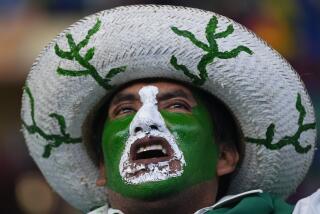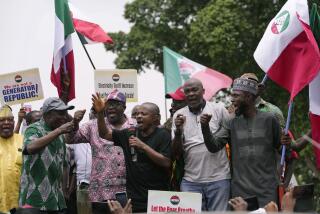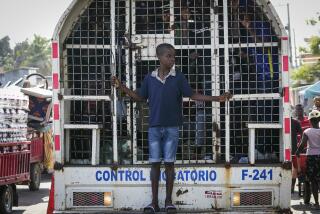One-Day Strike Paralyzes Dominican Republic
SANTO DOMINGO, Dominican Republic â A nonviolent, widely supported national strike protesting price increases brought the Dominican Republic to an economic standstill Monday.
The 24-hour strike, organized by a left-wing front of political parties, labor unions and community organizations, was aimed at preventing the government from carrying out an agreement with the International Monetary Fund to reduce inflation through fiscal austerity and reduced public consumption.
The strikers want the government to subsidize the price of food staples such as rice, beans, spaghetti, cooking oil and bread. They also called for an increase in the national minimum wage, to the equivalent of $110 a month.
Government sources said President Salvador Jorge Blanco will decree price subsidies and a small wage increase later in the week, but the austerity programs do not allow much money for these measures.
Heavily armed troops patrolled the streets Monday and kept large department stores open. Otherwise, commercial activity was halted. Small shopkeepers in the shantytown neighborhoods stayed home, as did the vendors who normally set up stalls on the plazas and along the larger avenues.
Government offices were open but virtually empty because bus and taxi operators ignored government appeals and kept their vehicles idle, preventing thousands of workers from getting to their jobs.
In the all-but-empty streets, boys played stickball or basketball. On street corners, men gathered to talk or play dominoes in the shade of tropical trees.
âAre you on strike?â a group of domino players were asked. âNo, we are out of work,â one replied.
Unemployment in this Caribbean island country of 6 million people is estimated at 40%. For this reason, among others, more than a million Dominicans have emigrated to the United States in recent years, often without legal documents.
The present economic crisis is probably the most severe this country has faced since civil war broke out in 1965, when President Lyndon B. Johnson sent in more than 18,000 American soldiers and Marines to put down an uprising led by supporters of former President Juan Bosch, deposed in a military takeover a year earlier.
âIt has never been so hard for the poor as now,â Juan de la Cruz Cordero, a port workersâ union leader, said at the union hall near the docks. âWe have union members who only get work once a month and earn as little as three pesos (about $1) a day.â
Last year, in April, during a similar protest movement against price increases, looting broke out and security forces opened fire. At least 60 people were killed. Mondayâs protest was more disciplined, except for a firebomb that was thrown against the facade of a branch of the Royal Bank of Canada.
The massive support for the strike reflected broad public discontent over recent price increases, particularly a 200% increase in the price of gasoline and other fuels that followed devaluation of the Dominican peso last month.
Jorge Blanco, who was elected in 1982, had little choice in imposing the devaluation and price increases. The Dominican Republic owes foreign creditors $3.2 billion, and payments, including arrears, for this year alone exceed $1.3 billion.
The United States provided a $50-million grant in December to cover urgent foreign payments, on condition that the peso be devalued. Another $45 million in loans is being offered to finance imports.
More to Read
Sign up for Essential California
The most important California stories and recommendations in your inbox every morning.
You may occasionally receive promotional content from the Los Angeles Times.










